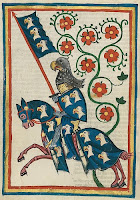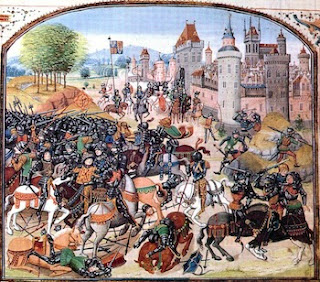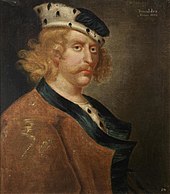Louis tried to give Charles his own sub-kingdom, but Louis' older sons rebelled against these attempts. You can read more about that here. In 837, Louis called his nobles together in Aachen and asked them to recognize Charles as heir to the entirety of Gaul. When Louis died in 840, Charles' allied himself with his older brother Louis the German to defeat their other brother, Lothair I. The Treaty of Verdun in 843 gave Charles all of the kingdom of the West Franks, an area which essentially encompasses modern day France. Louis the German held the eastern area that corresponds to Germany. Lothair kept the title King of Italy.
Life was relatively peaceful after Verdun. The brothers would meet every few years to discuss matters of mutual concern. In 858, however, Louis was persuaded by his nobles to try to take land from Charles. Charles was not very well-liked by his people, who did not respond to his call to raise an army, so he fled to Burgundy. Louis the German's bid failed, because the bishops refused to crown him king of the West Franks.
He eventually became emperor when Lothair's son died, and traveled to Rome where Pope John VIII. When John asked him for help against the Saracens in Italy, he crossed the Alps to help, but the nobles of Lombardy were not interested in supporting him. Charles, feeling ill, started back home, but died on 6 October 877, in the mountains. The body had to be brought home for proper burial, but carrying a body across the Alps was not easy or swift. The stench from the decaying corpse prompted them to bury him as soon as possible, at an abbey in Burgundy. A few years later the body as disinterred and taken for burial to the Abbey of Saint-Denis
Regarding his nickname: A Genealogy of Frankish Kings that was started during his reign lists him as Karolus Calvus, "Charles the Bald." There are no contemporary records that suggest he had little or no hair. Some scholars suggest that it was an ironic nickname because he was very hairy. Others point out that "bald" could simply be a reference to his lack of land at first. The illustration above is of Charles in the Vivian Bible, made in 845, and shows him with plenty of hair.
The Middle Ages cared about hair and its upkeep, and baldness was not seen as desirable. There were cures for baldness. If you're interested in them, come back tomorrow.

























